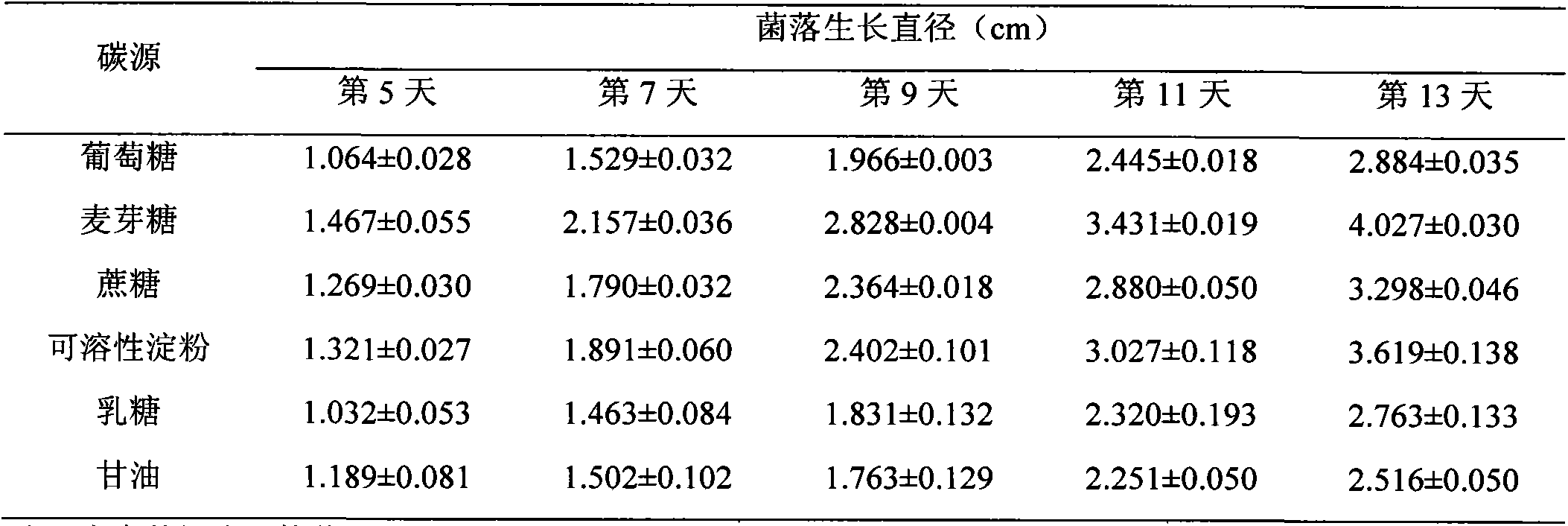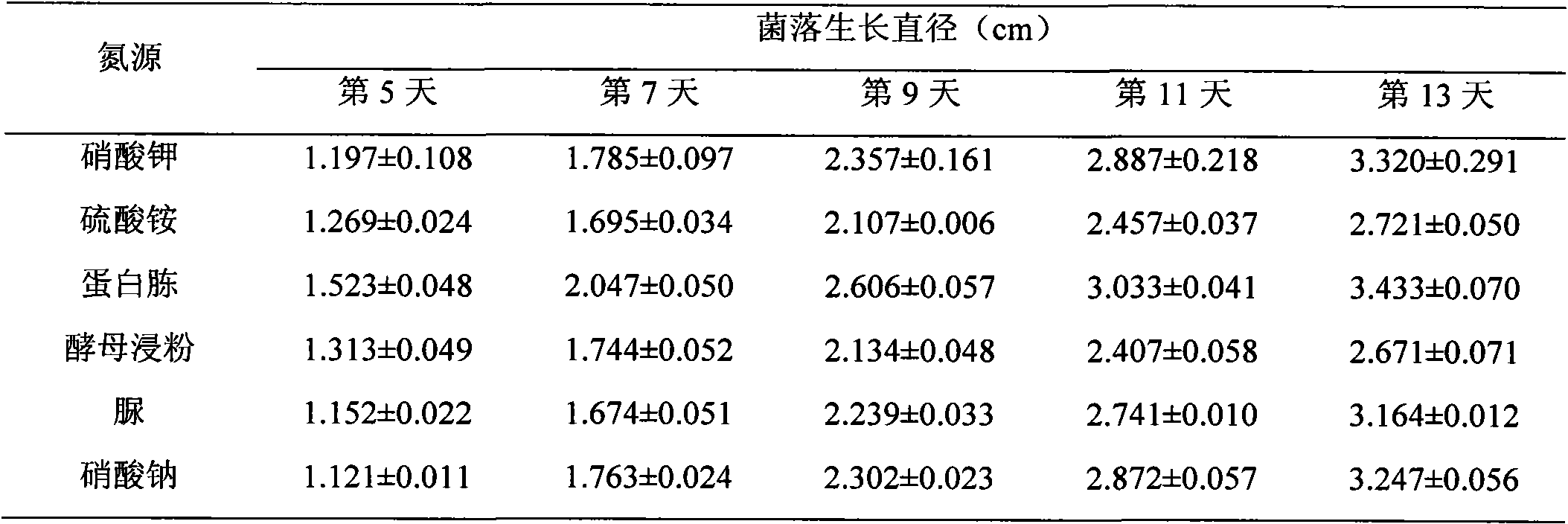Lecanicillium lecanii and application of Lecanicillium lecanii to control of greenhouse pests
A technology of Verticillium leek, greenhouse, applied in application, pesticides, fungi and other directions, can solve problems such as excessive pesticide residues in agricultural products and farmland environmental pollution.
- Summary
- Abstract
- Description
- Claims
- Application Information
AI Technical Summary
Problems solved by technology
Method used
Image
Examples
Embodiment 1
[0039] Embodiment 1: the mass culture technique of bacterial strain spore
[0040] Cultivate the strain of the modified strain in a shaker flask at 23°C for 65 hours, use it as a seed, connect it to rice grains after high-temperature sterilization with a water content of 75% in a volume of 8%, and put it in a sterile bag at 23°C Cultivate for 6 days, and open the bag for 2 days. After finishing the cultivation, dry in a drying room at 35° C. for 4 days, then crush the dried culture and sieve (250 mesh, 320 mesh, 400 mesh) to obtain pure sporopollen (containing 95% spores). This pure sporopollen can be used to formulate formulations for field application to control pests in greenhouses.
Embodiment 2
[0041] Embodiment 2: Control greenhouse vegetable whitefly and aphids
[0042]The resulting pure sporopollen will be produced according to: Verticillium lecanii pure sporopollen (95% spore-containing) 10%, glucose (powder) 2%, sodium lignosulfonate 1%, starch 3%, dispersant BD553 %, wetting agent BENOL790A3%, diatomaceous earth 78%, mixed evenly. The preparation can be applied in the field. The preparation is diluted 1500 times with water, sprayed to prevent whitefly in greenhouses, and when the indoor temperature is 23-27° C. and the relative humidity is above 85%, the parasitic rate to pests reaches 90% within 6 days.
Embodiment 3
[0043] Example 3: Control of Bemisia tabaci and thrips on cucumbers in the greenhouse
[0044] The resulting pure sporopollen will be produced according to: Verticillium lecanii pure sporopollen (containing spore 95%) 10%, glucose (powder) 2%, starch 2%, dispersant 84254%, wetting agent MORTWET4%, silicon Alginate 78%, mixed evenly. The preparation can be applied in the field. The preparation is diluted 1500 times with water, sprayed to control whitefly and thrips, and when the temperature in the greenhouse is 26° C. and the relative humidity is 85%, the parasitic rate to pests reaches 90% within 6 days.
PUM
 Login to View More
Login to View More Abstract
Description
Claims
Application Information
 Login to View More
Login to View More - R&D
- Intellectual Property
- Life Sciences
- Materials
- Tech Scout
- Unparalleled Data Quality
- Higher Quality Content
- 60% Fewer Hallucinations
Browse by: Latest US Patents, China's latest patents, Technical Efficacy Thesaurus, Application Domain, Technology Topic, Popular Technical Reports.
© 2025 PatSnap. All rights reserved.Legal|Privacy policy|Modern Slavery Act Transparency Statement|Sitemap|About US| Contact US: help@patsnap.com



